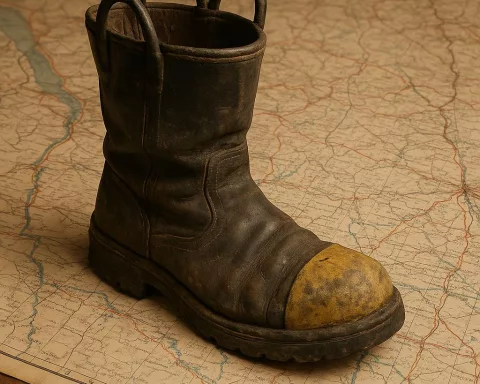Table Mountain is a breathtaking natural wonder in Cape Town, known for its flat top and rich history. The Table Mountain Aerial Cableway, which has been taking visitors to the summit since 1929, offers stunning views of the city and the unique plants that grow there. It has welcomed many famous visitors, showing how important it is to both locals and tourists. As it approaches its 95th anniversary, the cableway celebrates its role in connecting people to nature and fostering a sense of wonder for all who ride it.
What is the significance of Table Mountain and its Aerial Cableway?
Table Mountain, a UNESCO World Heritage Site, showcases stunning biodiversity and cultural heritage. The Table Mountain Aerial Cableway, operational since 1929, provides breathtaking views and symbolizes Cape Town’s identity, innovation, and connection to nature, making it a must-visit attraction for travelers.
The Iconic Table Mountain and Its Majestic Appeal
In the vibrant city of Cape Town, Table Mountain rises as a symbol of natural beauty and cultural significance. Its unique flat summit, frequently wreathed in clouds, captivates all who behold it, prompting both admiration and reflection. For nearly a century, the Table Mountain Aerial Cableway Company (TMACC) has served as a crucial conduit from the mountain’s base to its awe-inspiring peak, granting millions the chance to experience this natural marvel. As TMACC nears its 95th anniversary, it celebrates not just its rich history but its ongoing role as a portal to one of the planet’s most breathtaking views.
The inception of the cableway is a tale of vision and perseverance. Back in the late 19th century, an era of burgeoning industrial advances and a growing quest for exploration, the concept was born. Early plans suggested constructing a railway to scale the mountain, but these ambitions were derailed by the onset of World War I. It wasn’t until 1926 that Norwegian engineer Trygve Stromsoe revitalized the vision, proposing a cableway as a more viable and innovative solution to overcome the mountain’s formidable terrain.
In 1929, the realization of the Table Mountain Aerial Cableway marked a milestone in both engineering and tourism. Originally made of wood, the cable car offered a fresh perspective on the mountain, which had long been a source of wonder for both locals and tourists. Over the years, the cableway’s technology has seen significant advancements, ensuring passenger safety, efficiency, and comfort. Today, its state-of-the-art cars boast rotating floors, allowing riders panoramic views of the landscape as they journey up the mountain’s inclines.
A Nexus for Travelers and Celebrities Alike
Over its storied history, the cableway has welcomed diverse visitors, from everyday explorers to renowned celebrities and dignitaries. Legendary mountaineer Sir Edmund Hillary visited after his Everest conquest, and luminaries like Oprah Winfrey and Arnold Schwarzenegger have also admired the view from Table Mountain. These high-profile visits have added allure and fascination, solidifying the cableway’s status as an essential destination for those eager to witness wonder.
Table Mountain’s appeal extends beyond its striking beauty, reflecting the essence of Cape Town itself—a city rich with history and a tapestry of cultures. The mountain has witnessed Cape Town’s evolution over the centuries, from its early days as a waystation for ships to its modern role as a bustling center for arts, commerce, and tourism. This historical backdrop enriches the cableway experience, offering visitors a journey through both time and space.
As TMACC gears up for its 95th anniversary, it embraces the milestone with gratitude and a community-focused spirit. The upcoming celebrations underscore the contributions of all who’ve been part of its success: the dedicated employees, the supportive local community, and the multitude of visitors who have ascended to the summit. Planned events—including special ticket offers and charity drives—highlight the company’s dedication to giving back, as it raises funds for organizations safeguarding the mountain’s natural environment.
The Ecological and Cultural Significance of Table Mountain
Table Mountain’s importance is not confined to its cultural influence; it is also an ecological treasure. Part of the Cape Floristic Region—a UNESCO World Heritage Site and one of the world’s six floral kingdoms—the mountain is home to an astonishing array of plant species, many of which exist nowhere else on Earth. The cableway facilitates an appreciation of this extraordinary biodiversity, reminding visitors of the delicate balance between human activity and the preservation of nature.
Equally significant is the cableway’s cultural impact. It is a powerful symbol of Cape Town’s identity, emblematic of resilience, innovation, and a deep connection to the natural world. The experience of ascending Table Mountain weaves a shared story among visitors and locals, fostering a sense of wonder that transcends language and cultural barriers, uniting people in admiration of the surrounding beauty.
Reflecting on the cableway’s legacy, one cannot overlook the broader artistic and historical influences shaping our understanding of nature and exploration. The Romantic era’s focus on sublime and picturesque landscapes finds a modern echo in the awe inspired by Table Mountain. Similarly, the adventurous spirit of the Age of Exploration resonates with the experience of reaching the summit, where breathtaking views evoke a sense of endless possibility.
TMACC: A Testament to Ingenuity and Natural Splendor
The Table Mountain Aerial Cableway Company stands as a testament to human creativity and the enduring allure of nature’s wonders. As it nears its centennial, it continues to enchant, educate, and inspire, acting as a bridge between past and present. Far more than a mode of transportation, the cableway invites engagement with the world in a profound and meaningful way, reminding us all of the splendor surrounding us.
“`markdown
FAQ About Table Mountain and the Aerial Cableway
What is Table Mountain and why is it significant?
Table Mountain is a flat-topped mountain in Cape Town, South Africa, recognized for its stunning biodiversity and cultural heritage. It is a UNESCO World Heritage Site and symbolizes Cape Town’s identity, innovation, and connection to nature, making it an essential destination for both locals and tourists.
How long has the Table Mountain Aerial Cableway been in operation?
The Table Mountain Aerial Cableway has been operational since 1929. As it approaches its 95th anniversary, it continues to serve as a vital link between the base of the mountain and its summit, offering visitors breathtaking views and a unique experience.
Who are some notable visitors to Table Mountain?
Over the years, Table Mountain has welcomed many famous visitors, including legendary mountaineer Sir Edmund Hillary, media mogul Oprah Winfrey, and actor Arnold Schwarzenegger. Their visits have added to the mountain’s allure and established its status as a must-visit attraction.
What makes the cableway experience special?
The cableway provides an extraordinary journey to the summit with state-of-the-art cable cars featuring rotating floors for panoramic views. This experience allows visitors to appreciate both the natural beauty of Table Mountain and the rich history of Cape Town.
What events are planned for the cableway’s 95th anniversary?
To celebrate its upcoming milestone, the Table Mountain Aerial Cableway Company (TMACC) plans various community-focused events, including special ticket offers and charity drives aimed at supporting organizations that protect the mountain’s natural environment.
Why is Table Mountain important ecologically?
Table Mountain is part of the Cape Floristic Region, one of the world’s six floral kingdoms, home to numerous plant species, many of which are endemic. This ecological significance, along with its cultural impact, reinforces the importance of preserving Table Mountain for future generations.
“`









